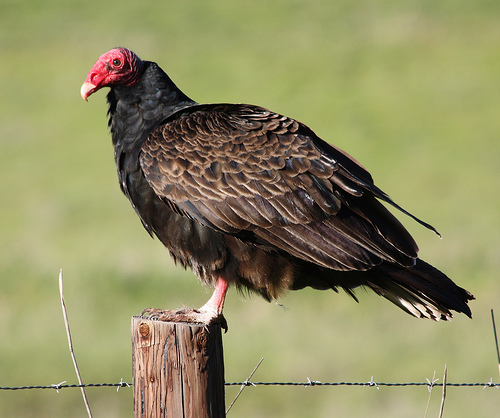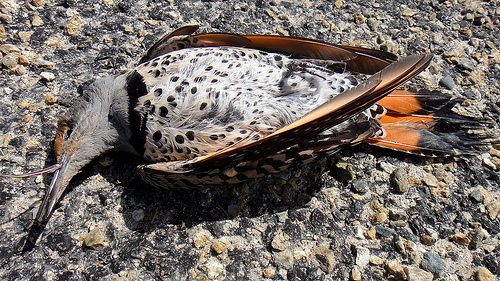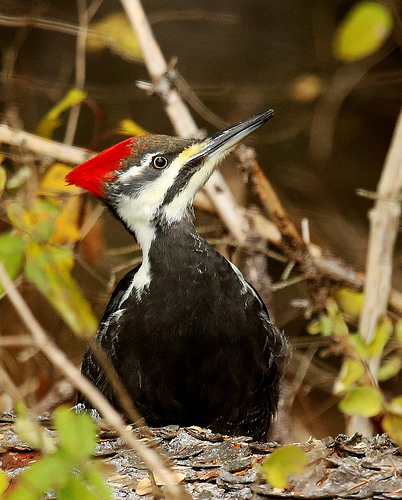More “spark” stories from MASSBird:
Jo-Anna experienced a number of small sparks until later in life the kindling finally ignited with a swoosh:
Birding started slowly. In my late teens, my aunt bought a house on the Cape in Sandwich. I would visit frequently. She had a number of bird feeders in the backyard. I remember looking at the incredibly colored breeding plumage of the American Goldfinches that visited the thistle (nyger) sock. I never even knew they existed!!! I would sit fascinated watching those feeders and comparing what I saw to her copy of Peterson’s Field Guide. I kept an eye out for the other brightly colored birds I was expecting to see. Those maps in Peterson’s made it look like I’d be seeing Indigo Buntings and Rose-colored Grosbeaks. Hmmm . . . they never did show up at her feeders.
In the early 1980s I moved to Sandwich. Then like so many others, life intervened – marriage, kids, work, etc. Until one day I was in a CVS parking lot waiting for a prescription to be ready when I spotted a bird – a shorebird of some type in the grassy area beside the parking lot. I wondered why is this bird here? There aren’t any beaches for miles. On the way home I stopped by my aunt’s to picked up the field guide so I could figure out what kind of bird it was. A Killdeer of course. Curiouser and curiouser . . .
In 2003 I noticed a large black bird perched on a roof as I drove to work that morning in Marstons Mills. It wasn’t a crow – way too big. I took a walk back in the direction of where I’d seen it. It was still there and I crept as close as I could to see what it was. I noticed its bald red head. I called Mass Audubon and described the bird which they identified as a Turkey Vulture. A Turkey Vulture . . . wow! Until then I had thought vultures were only found far out west. Well that did it. I was hooked. I had discovered the wide world of birds.
A Turkey Vulture hooked Jo-Anna on birding. photo by minicooper93402
Finally, couple of years ago I learned of a bird banding demo at the Cape Cod Museum of Natural History in Brewster. Well . . . I fell in love that day with bird banding. Sue Finnegan (the one woman dynamo who runs the Wing Island Bird Banding station) ask if anyone would like to release a bird after it had been banded. After all the kids got a chance, I couldn’t wait to raise my hand and have my turn. She patiently explained how to hold the bird and how to release it. Then she placed this most precious prize in my hand – a Lincoln Sparrow! A life bird at the time!!! So small and vibrant. I was mesmerized. I wanted more, more, more. I’ve found it’s so much easier to id a bird in hand, than when it flits about – way up in that tree or behind that annoying branch!
I am most grateful to Sue for sharing her experience, patience, vast knowledge, but mainly her friendship since that day. Thanks to everyone for sharing their amazing stories. It has been a remarkable, enjoyable time reading and reliving with everyone.
Kevin tells how a city kid got hooked:
I grew up in a Housing Project in the Roxbury section of Boston and in order to get away from the city I spent a lot of time wondering the wilds of the Blue Hills. It is quite wild, you can catch wild Brook Trout ( delicious! ) and see Mink and many other wild creatures that a city kid would not normally see. One day while walking through the woods I heard a sound that I didn’t know. I decided to find out what it was and after carefully sneaking through the woods I got to watch a Ruffed Grouse Drumming on a log at about 20 feet away. Have never stopped Birding since although I”m probably the only Birdwatcher in the world to spend 13 months in a country and not see a Bird!
P.S. That country was Vietnam and I was a Marine, can’t understand how I didn’t even remember at least ONE Bird !!!
Mike describes three sparks in his evolution as a birder:
The first was shoveling 2+ feet of snow from the back yard during the blizzard of ’78 so my dad, who always fed the birds, could get seed and suet out. I had no idea, at the time, which birds were which, but it hardly mattered. We HAD to get seed out for those hungry birds!
The second was when I was working in Wareham. I had the fortune of working with Mike Sylvia and listening to all his fantastic birding adventures. He put up a feeder outside the lab’s window but what got me really interested was the dead Flicker he brought in one day. How could such a colorful bird live around here? It looked like something from the rain forest. A “death march” in Chatham gave me a bad sunburn, 20 life birds and a desire to see more.
A dead Northern Flicker sparked Mike’s interest in birding. photo by FunGi
The third was a spring trip to Plum Island. I had only recently moved north of Boston and was dying to hit this famous hotspot. It was spring and no one else was around. I had almost always birded with others up until this point. I turned a corner on the Hellcat boardwalk and there it was; Chestnut-sided Warbler. A life bird and I identified all by myself! The fire that was slowly growing burst into a conflagration and hasn’t subsided yet. I’ve had the honor and pleasure of meeting and birding with some great people who also happen to be excellent birders. Thanks to all who’ve shared their expertise along the way.
Jim’s love of birding was sparked by a Pileated Woodpecker:
As a kid in Akron, Ohio I didn’t know a soul who knew anything about birds. My mother fed them, and I remember seeing cardinals (her favorites), families of bobwhites running across the back yard, and the occasional red-headed woodpecker. I also remember identifying a male scarlet tanager with my naked eyes on a family picnic, thanks to a tiny bird book my parents had bought me with 30 or 40 birds in it. Those birds are with me still, and were the beginning of my interest, but I never had a mentor, someone who could show me HOW TO WATCH BIRDS.
Years later, as a college student on summer vacation in 1963, I went with my fraternity brother (and future brother-in-law) to a remote fishing camp in an Ontario wilderness. “Remote” like nobody was there but the two of us and the old couple who ran the camp. One day I didn’t feel like fishing and asked Tony to drop me off across the lake from the camp so I could try my hand at watching birds with my father’s primitive binoculars. He did, and I soon found myself in a long-abandoned beaver swamp that had grown back to timber. I was reveling in the utter solitude of the place when a series of loud staccato calls rent the air like thunder, sending shivers down my spine. Within seconds a black-and-white bird with a flaming red crest, as big as a crow, flew to a dead tree not a hundred feet from me and proceeded to dismember it. That bird lit the flame that changed the course of my life.
A Pileated Woodpecker was Jim’s spark bird. photo by Seabamirum
Two years later, as a senior at Miami University in southwestern Ohio, I had a chance to take ornithology as an elective. The field trips were like going to heaven for me. In March we saw colorful ducks through telescopes on a nearby lake; in April it was seeing a great blue heron colony near the local (and tiny) airport; in May it was identifying warblers (who knew?) along Tallawanda Creek. I finally knew a little about how to watch birds, and the years between then and now have been a constant process of learning.
I can count on one hand the times have I had such an ecstatic experience watching wildlife. The only comparable thrills came when I was attacked by a nesting goshawk in Boxford and when a curious badger approached me within six feet in Idaho. But these events occurred long after the hook had been set. The pure joy I felt encountering that pileated woodpecker, alone in the wilderness, is one of my most cherished memories.
Initial Post Responses: Part 1 Part 2 Part 3 Part 4 Part 5 Part 6 Part 7
Join those who comment on what spark set them on their birding journey? Tell us about it with a comment below. You should sign up by RSS feed or via email to have future “spark” articles sent to you. Thanks
Discover more from Vermont Birder
Subscribe to get the latest posts sent to your email.




Pingback: What Sparked My Interest in Birding – Part 12
Pingback: What Sparked My Interest in Birding – Part 13